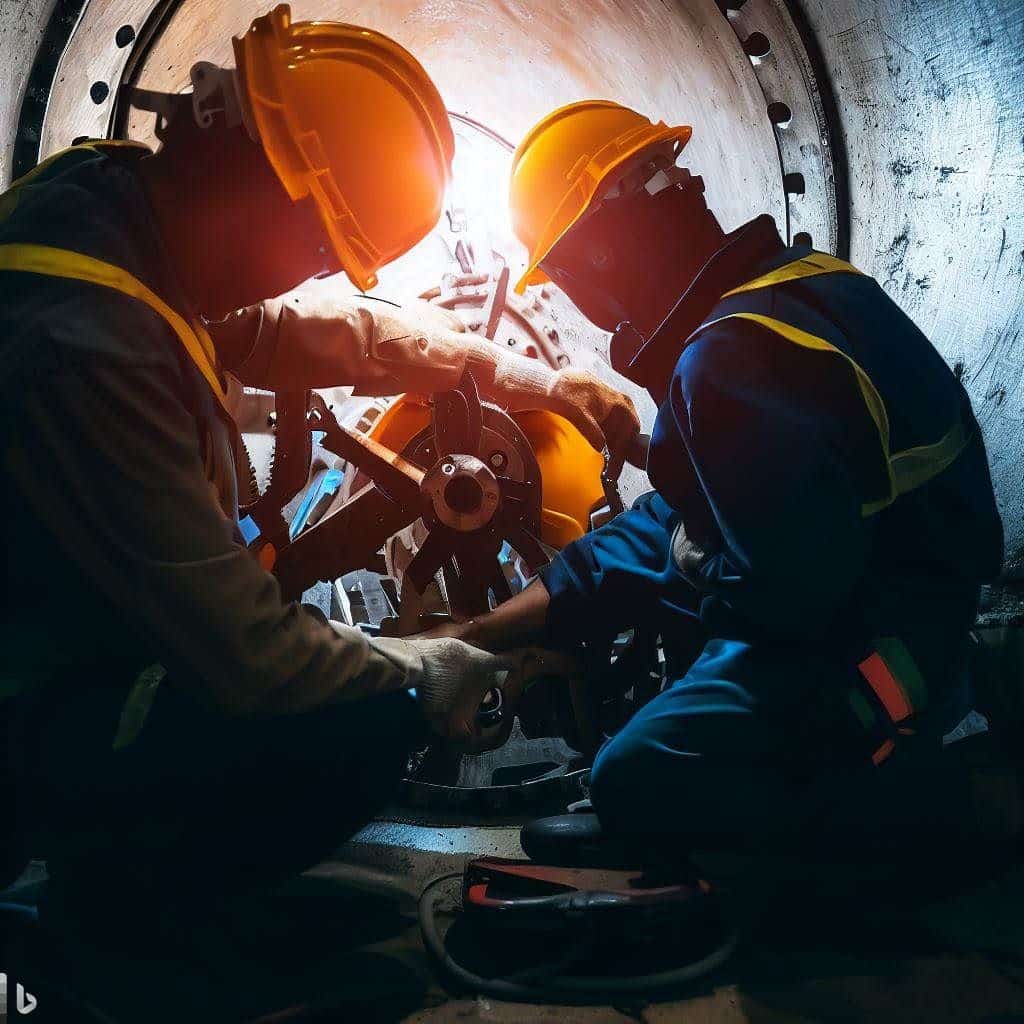Unlocking Success: The Importance of Confined Space Attendant Training in Today’s Industries
As the world continues to evolve and industries expand, the need for skilled professionals who can navigate various working environments has become increasingly important. One such area of expertise is confined space attendant training.
This specialized training is crucial for workers who operate in confined spaces, as it equips them with the knowledge and skills necessary to ensure their safety and contribute to a successful work environment. Confined space attendant training is essential for those who work in confined spaces and vital for organizations that wish to maintain a safe and compliant work environment.
This article will discuss the importance of confined space attendant training in today’s industries, explore the key elements of effective training, and provide tips for selecting the right training program. As we delve into confined space attendant training, we must understand the nature of confined spaces and the hazards they present to workers.
Understanding Confined Spaces and Their Hazards
Confined spaces are areas not designed for continuous human occupancy and have limited or restricted means of entry and exit. Examples of confined spaces include tanks, silos, pipelines, shafts, and tunnels. These spaces often have hazardous conditions that can pose significant risks to workers, such as toxic substances, extreme temperatures, and the potential for engulfment or entrapment.
Working in confined spaces presents numerous challenges for workers and organizations. The hazards associated with confined spaces include oxygen deficiency, flammable or toxic gases, and physical hazards such as entrapment, engulfment, or drowning. These hazards can lead to severe injuries or even fatalities if not properly managed.
Organizations must implement comprehensive safety measures to combat these dangers and ensure that workers receive appropriate confined space attendant training. This training prepares workers to identify and mitigate the risks associated with confined spaces, ultimately contributing to a safer and more efficient work environment.

The Role of a Confined Space Attendant
A confined space attendant, a hole watch, or a safety watch is a critical confined space work team member. Their primary responsibility is to monitor the safety and well-being of workers who enter and work in confined spaces. Confined space attendants are vital in maintaining a safe working environment by ensuring that all safety procedures and protocols are followed and assisting in an emergency.
Some of the key responsibilities of a confined space attendant include:
- Monitoring and maintaining communication with workers inside the confined space
- Ensuring that all required permits and safety procedures are in place before work begins
- Continuously assessing the conditions within the confined space and taking appropriate action in the event of a hazardous situation.
- Initiating emergency response procedures if necessary
Given the significant responsibilities of a confined space attendant, these professionals must receive comprehensive training.
Key Elements of Effective Confined Space Attendant Training
Effective confined space attendant training should cover various topics to ensure that attendants are well-prepared for their roles. Some of the essential elements of this training include:
- Understanding confined spaces and their hazards: Attendants must be familiar with the various types of confined spaces and their associated hazards. This knowledge allows them to identify and assess potential risks within a confined space effectively.
- Roles and responsibilities of a confined space attendant: Training should clearly outline the duties and responsibilities of a confined space attendant, ensuring that they understand the expectations and requirements of their role.
- Safety procedures and protocols: Attendants must be well-versed in the safety procedures and protocols that apply to their work environment. This includes knowledge of permits, ventilation requirements, and the use of personal protective equipment (PPE).
- Emergency response and rescue procedures: In an emergency, confined space attendants must be able to quickly and effectively initiate rescue procedures. Training should cover various emergencies in a confined space and the appropriate steps.
By covering these key elements, confined space attendant training ensures that attendants have the knowledge and skills to maintain a safe and efficient work environment.
Importance of Confined Space Attendant Training in Various Industries
Confined space attendant training is crucial across various industries, including oil and gas, construction, mining, and manufacturing. Workers frequently encounter confined spaces in these sectors with unique hazards and challenges.
By providing comprehensive confined space attendant training, organizations can mitigate these risks and ensure the safety of their workers. For example, in the oil and gas industry, confined spaces such as storage tanks and pipelines can contain hazardous gases and chemicals that pose significant risks to workers.
Similarly, construction sites often feature confined spaces such as trenches and excavations, where workers face the dangers of cave-ins, engulfment, and hazardous atmospheric conditions. In these instances, a well-trained confined space attendant is essential for maintaining a safe work environment.
Legal Requirements and Industry Standards for Confined Space Attendant Training
In many countries, including the United States, confined space attendant training is mandated by law. The Occupational Safety and Health Administration (OSHA) sets forth specific regulations regarding confined spaces, including the requirement for organizations to provide comprehensive confined space attendant training. These regulations are designed to ensure the safety of workers and minimize the risk of accidents and injuries.
In addition to legal requirements, numerous industry standards and best practices outline the need for confined space attendant training. Organizations that adhere to these standards are committed to maintaining a safe and compliant work environment.
The Benefits of Confined Space Attendant Training for Workers and Organizations
Investing in confined space attendant training offers numerous benefits for workers and organizations. Some of these benefits include:
- Increased safety: Comprehensive confined space attendant training equips workers with the knowledge and skills to identify and mitigate potential hazards, ultimately reducing the risk of accidents and injuries.
- Improved efficiency: Well-trained confined space attendants can contribute to more efficient work processes by ensuring that safety procedures are followed, and potential hazards are addressed promptly.
- Compliance with regulations: Providing confined space attendant training helps organizations meet legal requirements and industry standards, demonstrating their commitment to maintaining a safe and compliant work environment.
- Reduced liability: By investing in confined space attendant training, organizations can reduce their liability in the event of an accident or injury, as they can demonstrate that they have taken the necessary steps to ensure worker safety.
- Enhanced reputation: Organizations prioritizing worker safety and investing in confined space attendant training are more likely to be viewed favorably by clients, partners, and the public.
Tips for Selecting the Right Confined Space Attendant Training Program
When choosing a confined space attendant training program, organizations should consider the following factors:
- Relevance to your industry: Ensure the training program is tailored to your industry’s needs and hazards.
- Compliance with regulations and standards: Verify that the training program meets all relevant legal requirements and industry standards.
- Qualified instructors: Seek training programs with experienced and knowledgeable instructors who effectively communicate the necessary information.
- Hands-on training: Look for programs that offer hands-on training opportunities, as this can enhance learning and better prepare workers for real-world situations.
- Ongoing support and resources: Select a training program that provides ongoing support and resources, such as refresher courses and access to educational materials.
By considering these factors, organizations can select a confined space attendant training program that best meets their needs and contributes to a safer and more efficient work environment.

Real-Life Case Studies of Successful Confined Space Attendant Training Implementation
Numerous organizations have successfully implemented confined space attendant training programs, resulting in tangible worker safety and efficiency improvements. Some examples of these success stories include:
- A major oil and gas company implemented a confined space attendant training program that significantly decreased the number of confined space-related incidents and injuries.
- A construction company specializing in trenching and excavation work saw a notable improvement in worker safety and project efficiency after investing in confined space attendant training.
- A manufacturing facility experienced a marked reduction in accidents and near-misses after implementing a comprehensive confined space attendant training program.
These real-life examples demonstrate the value of investing in confined space attendant training and its positive impact on worker safety and organizational success.
Conclusion: The Value of Investing in Confined Space Attendant Training for Today’s Industries
In today’s fast-paced industries, the importance of confined space attendant training cannot be overstated. By investing in comprehensive training programs, organizations can ensure the safety of their workers, maintain compliance with regulations, and enhance overall efficiency.
As we have explored in this article, confined space attendant training is a crucial component of a successful work environment, and organizations that prioritize this training are well-positioned to unlock success in their respective industries.
Frequently Asked Questions:
What is a confined space attendant?
A confined space attendant, a hole watch, or a safety watch is a critical confined space work team member. Their primary responsibility is to monitor the safety and well-being of workers who enter and work in confined spaces.
What are the key elements of effective confined space attendant training?
Effective confined space attendant training should cover understanding confined spaces and their hazards, the roles and responsibilities of a confined space attendant, safety procedures and protocols, and emergency response and rescue procedures.
Why is confined space attendant training important in various industries?
Confined space attendant training is crucial across various industries, as workers frequently encounter confined spaces that present unique hazards and challenges. By providing comprehensive training, organizations can mitigate these risks and ensure the safety of their workers.
What are the benefits of confined space attendant training for workers and organizations?
Some benefits of confined space attendant training include increased safety, improved efficiency, compliance with regulations, reduced liability, and an enhanced reputation.
How can I select the right confined space attendant training program?
When choosing a training program, consider factors such as relevance to your industry, compliance with regulations and standards, qualified instructors, hands-on training opportunities, and ongoing support and resources.
